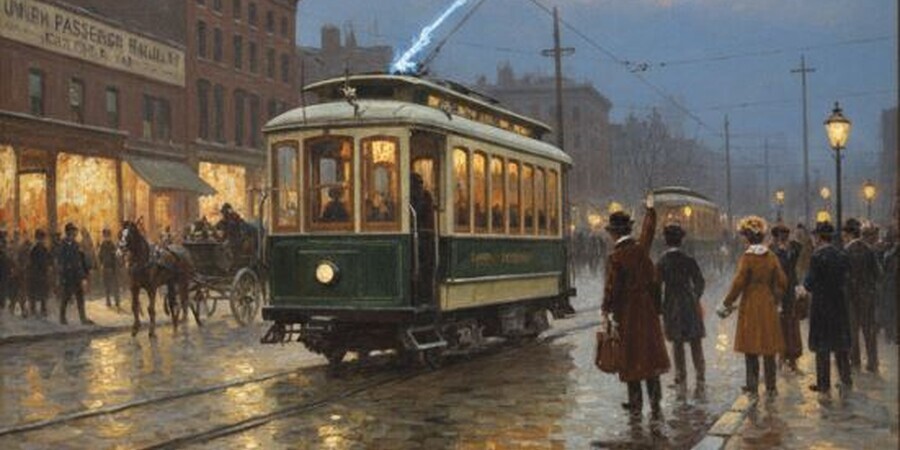PENNSYLVANIA - Pennsylvania has a rich history of innovation, and its transportation systems are no exception. When it comes to the advent of electric streetcars, or trolleys, the Quaker City once again played a pioneering role. The distinction of hosting the first electric trolley line in Pennsylvania belongs to Philadelphia, specifically a route that began operating in 1892. This marked a significant leap forward from horse-drawn streetcars and laid the groundwork for modern urban transit.
From Horses to Electric Power: A Revolution in Urban Transit
For decades, urban transportation in Philadelphia, like many major cities, relied heavily on horse-drawn streetcars. While an improvement over walking, these systems were slow, costly to maintain (requiring stables, feed, and many animals), and contributed to sanitation issues. The late 19th century, however, was an era of rapid technological advancement, with electricity emerging as a transformative force.
Inventors like Frank Sprague were developing practical electric railway systems, and cities across the United States began to experiment with this new technology. Philadelphia, with its dense population and growing industrial base, was a prime candidate for such an upgrade.
The Debut of Philadelphia's Electric Trolley (1892)
On December 15, 1892, the first electric trolley car officially began revenue service in Philadelphia. The initial line was part of the Union Passenger Railway Company, which would later be absorbed into the broader Philadelphia Rapid Transit Company (PRT), the precursor to today's SEPTA.
This historic debut was not a single, isolated event but part of a rapid electrification process. Once the benefits of electric trolleys became apparent—they were faster, more efficient, could carry more passengers, and were cleaner than their horse-drawn predecessors—the conversion of Philadelphia's extensive streetcar network accelerated. Within just a few years, horsecar lines were largely obsolete, replaced by the humming overhead wires and sparking trolleys that would define urban transport for the next half-century.
Impact and Legacy
The introduction of the electric trolley in Philadelphia, as elsewhere, had a profound impact:
- Urban Expansion: Faster and more reliable transit allowed cities to expand outwards, leading to the development of new residential neighborhoods (streetcar suburbs) beyond the immediate city center.
- Economic Growth: Businesses benefited from easier access for customers and employees.
- Social Change: Trolleys made leisure activities, shopping, and cultural institutions more accessible to a wider segment of the population.
- Modern Transit Infrastructure: The infrastructure laid down for early trolleys—tracks, power lines, and car barns—formed the basis of many modern public transit systems.

Sources:
- Philadelphia Rapid Transit Company (PRT) / SEPTA History: Archival and historical documents from Philadelphia's transit authorities.
- Philadelphia Inquirer / Historical Archives: Contemporary newspaper accounts from 1892.
- National Register of Historic Places / Pennsylvania Historical & Museum Commission: Documentation related to historic transportation infrastructure.
- "Philadelphia: A 300-Year History" edited by Russell F. Weigley. W. W. Norton & Company, 1982.


